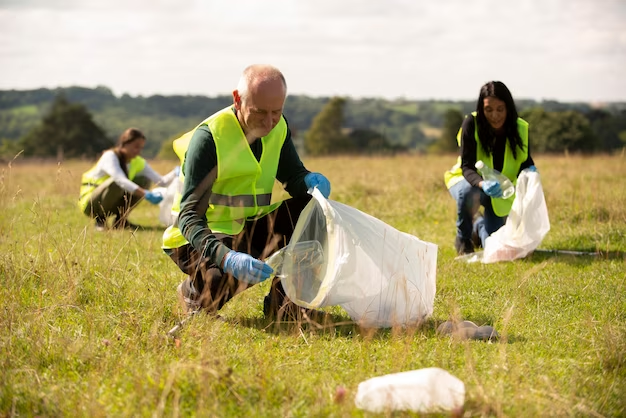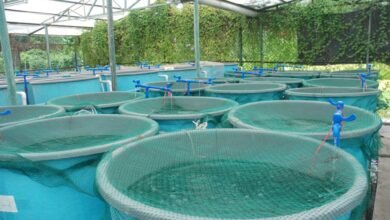
What is Environmental Remediation Services?
Environmental remediation services encompass a multifaceted approach to addressing pollution and contamination in our environment. These services involve the assessment, cleanup, and restoration of sites impacted by various sources of pollution, including industrial activities, hazardous waste disposal, and accidental spills. Environmental remediation professionals utilize a range of techniques and technologies to remove or mitigate contaminants from soil, water, and air, aiming to restore affected ecosystems and protect human health. Through comprehensive site evaluations, strategic planning, and meticulous execution, environmental remediation services play a crucial role in mitigating the harmful effects of pollution and preserving the integrity of our natural environment for present and future generations.
How Environmental Remediation Services Work?
Environmental remediation services typically begin with site assessment and characterization to understand the extent and nature of contamination. Depending on the specific contaminants involved, various remediation technologies and techniques are employed, such as excavation and removal, bioremediation, chemical treatment, and containment. The chosen approach is tailored to the unique conditions of each site and may involve multiple phases over an extended period. Throughout the process, careful monitoring and testing ensure that remediation efforts are effective and meet regulatory standards. Successful remediation requires close collaboration between environmental scientists, engineers, regulators, and stakeholders to achieve the desired outcomes.
Why Are Environmental Remediation Services Vital for Conservation?
The protection of natural resources, public health, and ecosystems from the negative consequences of pollution is made possible by environmental remediation services. These services support biodiversity preservation, habitat restoration, and water quality protection by eliminating or reducing pollutants. The safe repurposing of previously polluted land for commercial, residential, or recreational uses is another way that remediation can boost community vitality. The risk of long-term environmental damage can also be decreased by treating environmental pollution since it can stop contaminants from spreading to nearby places. To encourage sustainable growth and guarantee a better and cleaner environment for current and future generations, it is imperative to invest in environmental remediation services.
Tips: Implementing Effective Environmental Remediation Services
Implementing effective environmental remediation services requires meticulous planning, clear communication, and adherence to best practices. Begin by conducting a thorough site assessment to understand the extent and nature of contamination. Engage stakeholders early in the process to foster transparency and collaboration. Tailor remediation strategies to the specific contaminants and site conditions, utilizing a combination of proven techniques and innovative technologies. Prioritize safety measures to protect workers and surrounding environments. Regular monitoring and evaluation are essential to track progress and adjust strategies as needed. Effective communication with all stakeholders is key to managing expectations and addressing concerns. By following these tips, environmental remediation efforts can achieve successful outcomes while minimizing environmental impact.
Types of Innovations in Cleaning Up Environmental Contamination
Innovations in cleaning up environmental contamination encompass a diverse array of approaches aimed at addressing the complex challenges of pollution remediation. Nanoremediation introduces nanoparticles tailored to target and degrade specific pollutants, offering precision and efficiency in cleanup efforts. Bioremediation harnesses the natural abilities of microorganisms to break down or neutralize contaminants, providing sustainable and cost-effective solutions. Advanced oxidation processes utilize powerful oxidants like ozone or ultraviolet radiation to degrade persistent organic pollutants in soil and water. Moreover, emerging technologies such as electrokinetic remediation and phytoremediation offer innovative means of mobilizing and removing contaminants from the environment. These diverse innovations hold the potential to revolutionize environmental cleanup, paving the way for a cleaner and healthier planet.
Exploring Cutting-Edge Technologies in Environmental Remediation
Analyzing state-of-the-art technologies for environmental cleanup reveals a promising new direction in our fight against pollution. With the help of technology like microbial fuel cells and electrokinetic remediation, contaminated places can be effectively cleaned up. Highly developed oxidation techniques precisely break down persistent toxins, while nanotechnology allows for tailored treatment of pollutants. 3D printing is incorporated to enable the production of personalized remediation tools that improve productivity and flexibility. In terms of environmental remediation, these technologies mark a paradigm change that promises more scalable, affordable, and sustainable solutions. Restoring and maintaining the health of our planet is a goal that we are getting closer to as we investigate and improve these state-of-the-art instruments.
Environmental Remediation Services: Challenges and Opportunities
Environmental remediation services present both challenges and opportunities in addressing pollution and safeguarding ecosystems. Challenges include navigating regulatory frameworks, accessing funding, and developing tailored solutions for diverse contaminants. Stakeholder engagement and public perception can also influence project success. However, these challenges also offer opportunities for innovation and collaboration. Advancements in technology and research provide new tools and approaches for more efficient and sustainable cleanup efforts. Moreover, addressing environmental contamination presents economic benefits such as job creation and increased property values. By addressing these challenges and seizing opportunities, environmental remediation services can continue to play a vital role in protecting our planet’s health and promoting environmental sustainability.
The Future of Environmental Remediation: Advancements and Trends
The future of environmental remediation is poised for remarkable advancements driven by innovative technologies and evolving trends. Artificial intelligence and machine learning are anticipated to revolutionize cleanup processes by offering predictive modeling and data-driven decision-making capabilities. Robotics and automation will enhance efficiency and safety, particularly in hazardous environments. Sustainability will be a central focus, with green remediation practices minimizing environmental impact and promoting resource efficiency. Addressing emerging contaminants like pharmaceuticals and microplastics will become increasingly important, spurring research into novel remediation techniques. Overall, the future holds immense promise for more effective, sustainable, and environmentally conscious approaches to remediation, ensuring a healthier planet for generations to come.
Conclusion
The innovations in environmental remediation services present a beacon of hope in the fight against environmental contamination. Significant progress in restoring ecosystems and protecting human health is being witnessed through the integration of cutting-edge technologies. These technologies include nano remediation and phytoremediation, alongside traditional methods. These advancements not only offer more efficient and effective cleanup solutions but also pave the way for sustainable practices that minimize environmental impact. As we continue to explore new techniques, we embrace interdisciplinary collaboration. We move closer to achieving our goal of a cleaner, healthier planet for current and future generations. Environmental remediation services stand as a testament to our commitment to preserving the natural world and fostering a more sustainable future.



